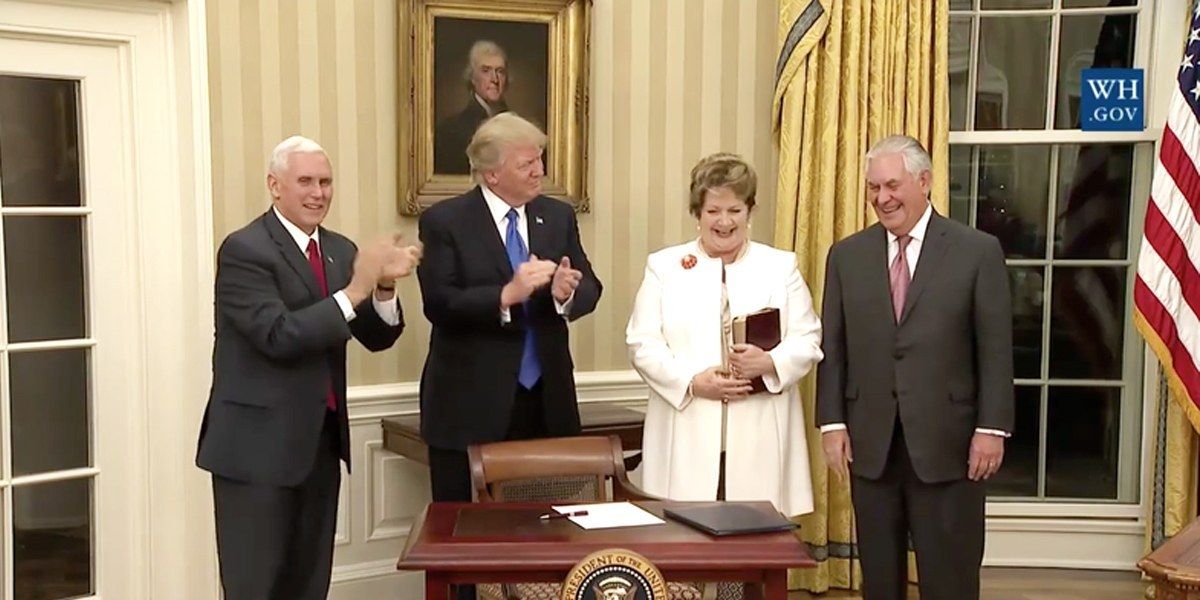

By Steve Horn
President Donald Trump‘s newly sworn-in Secretary of State, recently retired ExxonMobil CEO Rex Tillerson, turned heads when he expressed support for an aggressive military stance against China’s actions in the disputed South China Sea during his Senate committee hearing and in response to questions from Democratic Party Committee members.
Tillerson’s views on China and the South China Sea territory appear even more concerning against the backdrop of recently aired comments made by Trump’s increasingly powerful chief strategist, Steve Bannon, that the two nations were headed toward war in the next five to 10 years, as reported by the Independent (UK). However, what Tillerson did not reveal in his answers is that Exxon, as well as Russian state-owned companies Gazprom and Rosneft, have been angling to tap into the South China Sea’s offshore oil and gas bounty.
“We’re going to have to send China a clear signal that, first, the island-building stops,” Tillerson said at his hearing, speaking of the man-made islands China’s military has created in the South China Sea and uses as a military base. “And second, your access to those islands also is not going to be allowed.”
https://youtu.be/unAPMCUM118 and resign as the operator.”
In 2014, Exxon expressed interest in the Philippines’ offshore reserves up for offer once again, according to an official statement made by the Philippines Department of Energy (DOE). But that bid did not go anywhere, with the DOE suspending all oil and gas exploration in the area due to the territorial dispute with China.
Malaysia
In 1997 Exxon signed a production sharing agreement with Malaysian state-owned company PETRONAS. Six years later, the two companies began their first major drilling project in the South China Sea at the Bintang natural gas field.
A decade later in March 2013, Exxon began production in Malaysia’s South China Sea-based Telok offshore gas basin, a project it co-owns on a 50-50 basis with PETRONAS.
Exxon began phase two of Telok with PETRONAS in 2014, with the two projects together making up 15 percent of the country’s oil production and half its natural gas output. That same year, Exxon signed another $2.6 billion 50-50 ownership stake deal with PETRONAS for an enhanced oil recovery project in the South China Sea.
“Exxon’s Malaysian subsidiary operates 34 platforms in 12 fields and has an interest in another 10 platforms in five fields in the South China Sea,” reported the Houston Chronicle, putting the enhanced oil recovery project deal into context. “Those fields supply about 20 percent of Malaysia’s crude oil output and condensate and 50 percent of Peninsular Malaysia’s natural gas needs.”
“Oil-Coated Glasses”
Today, Tillerson has sold all of his Exxon stock, which normally would have been deferred to him over a period of time post-retirement. Sen. Ed Markey (D-MA) recently said he worries Tillerson will see the world through “oil-coated glasses,” given Exxon’s multicontinental reach to every continent on the planet besides Antarctica.
But as the South China Sea shows, even if not dealing directly with oil and gas reserves, “black gold” can still loom large when considering geopolitical and foreign policy negotiations. Some believe Tillerson, from that vantage point, is a fatally flawed choice.
“The proportion of Tillerson’s job that would have the appearance of conflict is just enormous,” David Arkush, managing director for Public Citizen’s climate program, recently told Bloomberg. “If someone has to recuse himself from that many matters, he has no business being in that role.”
Reposted with permission from our media associate DeSmogBlog.

 233k
233k  41k
41k  Subscribe
Subscribe 
